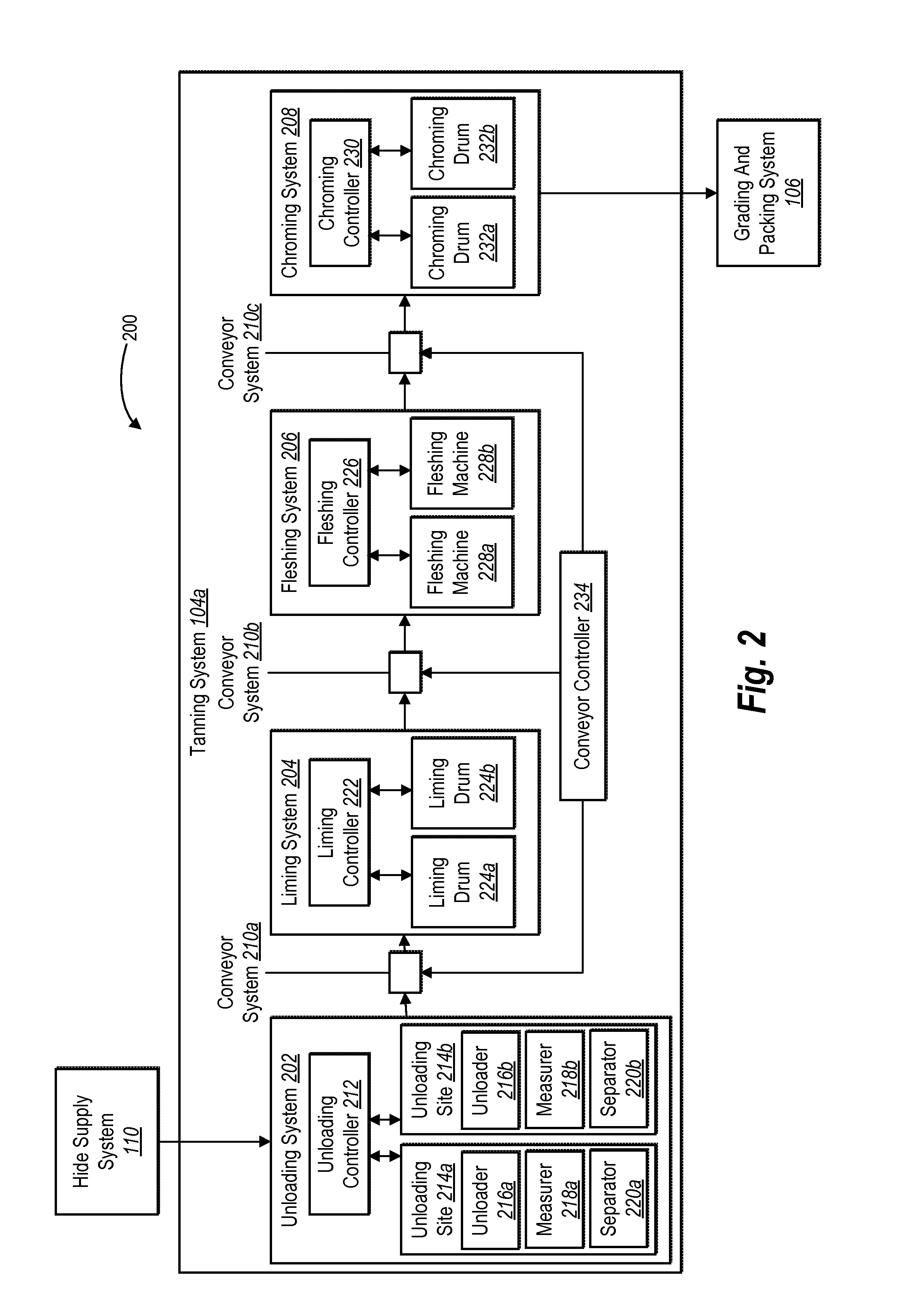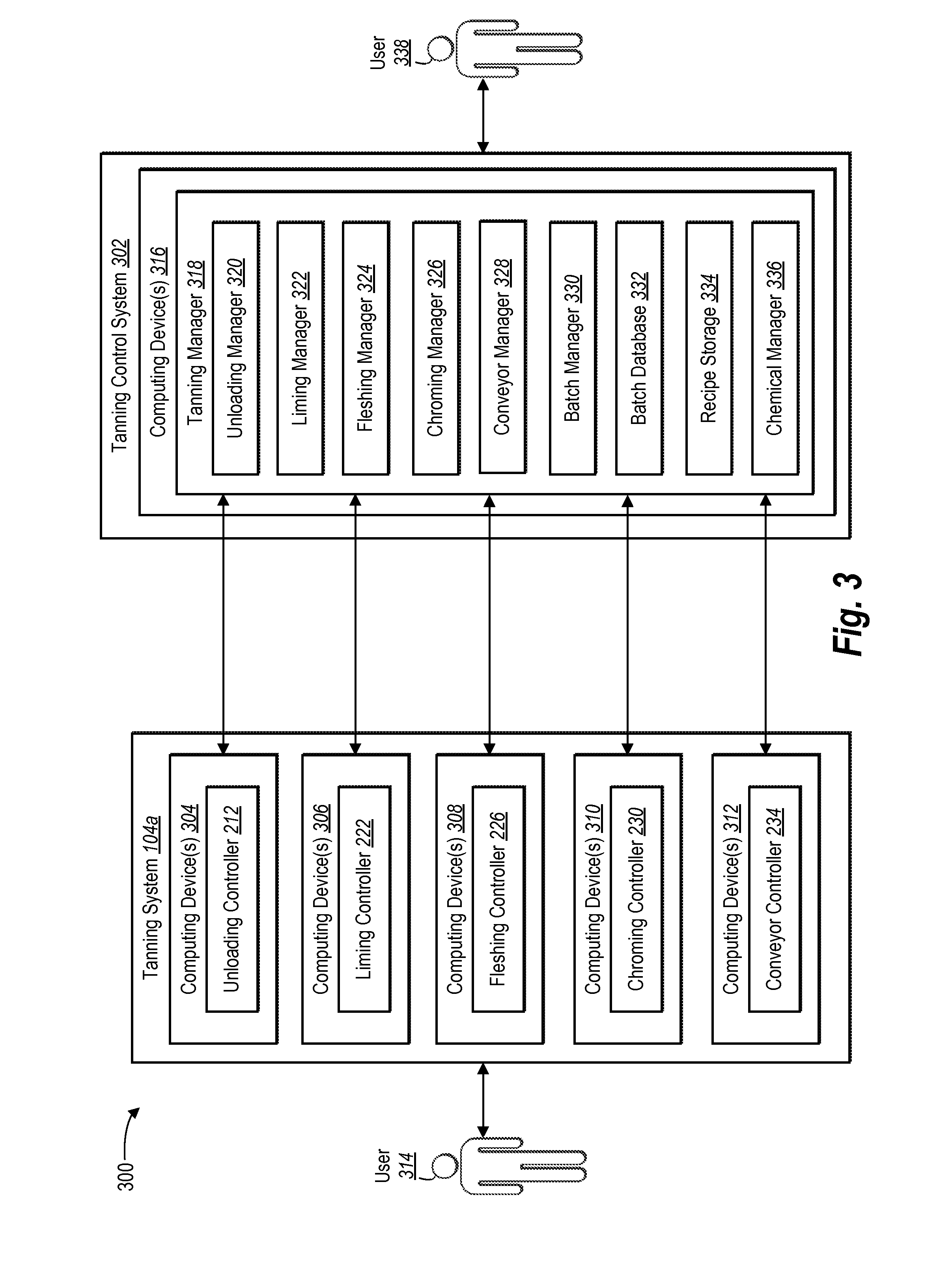Hide routing systems and methods
a routing system and hide technology, applied in the field of processing animal hides, can solve the problems of increasing the cost of a tanning process, inefficient and time-consuming, and the typical tanning system and method involve significant amounts of manual labor, so as to improve the processing of raw animal hides, reduce the amount of manual handling of hides, and improve coordination
- Summary
- Abstract
- Description
- Claims
- Application Information
AI Technical Summary
Benefits of technology
Problems solved by technology
Method used
Image
Examples
Embodiment Construction
[0035]One or more embodiments improve the processing of raw animal hides into leather. In particular, one or more embodiments include a tanning system that reduces the amount of manual labor needed to unload raw animal hides from transport containers used to ship the hides to the tannery. More specifically, example tanning systems include an unloading system that includes a computerized unloading controller that controls one or more unloading sites. Each unloading site includes an unloader (e.g., a hydraulic lift) that unloads the hides from the transport containers, a measurer (e.g., a weight scale) that determines one or more hide characteristics, and a separator (e.g., a knock-down wheel mechanism) that separates an amalgamation of the hides into individual hides. One or more embodiments of a tanning system also include a computerized unloading manager that communicates with the computerized unloading controller to direct and coordinate the unloading of the raw animal hides from ...
PUM
| Property | Measurement | Unit |
|---|---|---|
| weight | aaaaa | aaaaa |
| weight capacity | aaaaa | aaaaa |
| durable | aaaaa | aaaaa |
Abstract
Description
Claims
Application Information
 Login to View More
Login to View More - R&D
- Intellectual Property
- Life Sciences
- Materials
- Tech Scout
- Unparalleled Data Quality
- Higher Quality Content
- 60% Fewer Hallucinations
Browse by: Latest US Patents, China's latest patents, Technical Efficacy Thesaurus, Application Domain, Technology Topic, Popular Technical Reports.
© 2025 PatSnap. All rights reserved.Legal|Privacy policy|Modern Slavery Act Transparency Statement|Sitemap|About US| Contact US: help@patsnap.com



